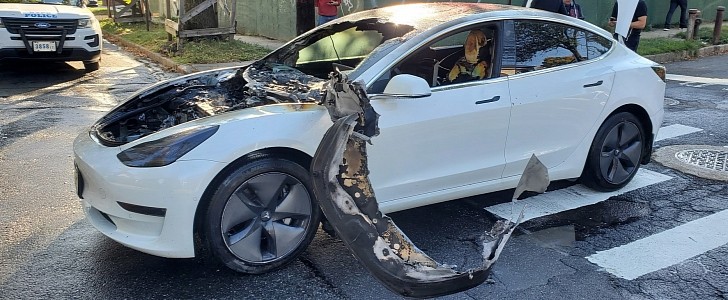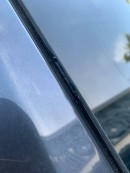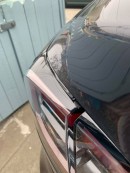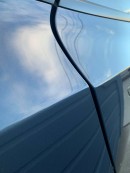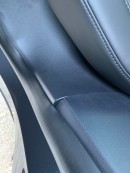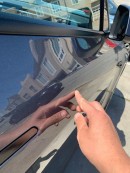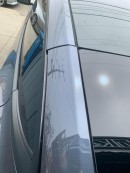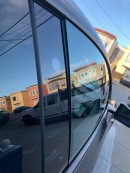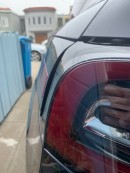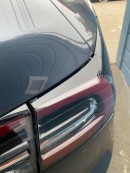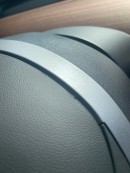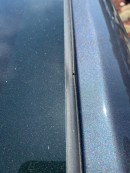Tesla has long sold the idea that it is the company that “has done more for sustainability.” It did so very recently while trying to bash the California DFEH (Department of Fair Employment and Housing) for their “systemic racism” lawsuit against it. This case exemplifies that the company may be doing right the opposite. Instead of promoting clean transportation, Tesla may be damaging it.
The EV maker wants to be a synonym for electric cars. Associating racism with EVs is not the best way to promote them, even if it was for negligence. For a company whose CEO claims to be constantly on the assembly lines, it may even give the impression that he deliberately ignored what happened in Fremont. Unfortunately, this is not the only reason why Tesla could be hindering zero-emission vehicles.
Although Nissan tried to give the world an affordable electric car, it was Tesla that made them desirable. First, with the Roadster, but it was the Model S that really did the trick. Presented as a luxury vehicle due to its price and service quality, it was the first EV that could really compete with ICE cars. The Model S had a decent range and a dedicated network of superchargers that made traveling long distances feasible. That’s something to applaud, but Tesla messed up – from the very beginning.
We wrote an entire text about how the EV maker seemed to ignore the effects of mass-production, but it is worth talking about that again, remembering the first episode to confirm that was the case.
Before delivering the first Model S, Philippe Chain wanted to test it for at least 1 million miles. Most automakers do that for 10 million miles and at least two winter times. The former Tesla executive VP for quality asked Elon Musk for this shorter test, and the company’s CEO said he would not postpone the electric sedan presentation to wait for the results.
Chain tried to warn Musk about the risks: if the car had any error, it would be repeated thousands of times in the assembly line. Musk said they would perform recalls and OTA updates to take care of the defects, showing he completely missed the message or just chose to oversee it. Tesla and its customers paid the price. They still do.
We could name several episodes in which that happened, but the one with the MCU illustrates that perfectly. The lack of automotive-grade materials – tested to ensure they would perform as expected – made a goo leak from the computer screens, which would eventually turn yellow.
Later, an insufficient eMMC card turned the infotainment computers into wear parts. That’s what the then vice president of legal affairs, Al Prescott, told NHTSA when he was still trying to argue that there was no need for the recall demanded by the safety agency.
These are just two instances of the “deliver now, fix later” motto that Tesla follows. Tesla advocates and investors pretend it does not happen, but regular customers are really annoyed by that. Ask people who experienced suspension failures at high speed, constant water leaks, windows that break spontaneously because the body geometry is wrong, cars with a heat pump that fails in freezing weather, paint that peels... They do not have good feedback about that. Some vow never to buy another EV while they can avoid them.
The latest reputation blow was caused by Elon Musk comparing Justin Trudeau to Hitler on Twitter. Canada's prime minister is obviously mishandling the protests in his country and being accused of going against democratic principles. However, accusing him of genocide is definitely crossing the line. On top of that, no CEO would share personal opinions on social media that could harm their companies. Doing so is not brave: it is just reckless, to put it in mild words.
With that, people that already loathe EVs have one more reason to despise them. Tesla owners often report road rage episodes for no reason, coal rolling, or present videos of people keying their cars. Some people on Twitter openly say they will never buy a Tesla while Elon Musk is in charge of the company. That kind of hostility can harm EVs as a whole.
The Tesla CEO once said that his company would have accomplished its mission just by pointing the way for others to follow, but that was not sincere. Check the company’s attitude toward other EV manufacturers. Musk mocked BYD and Nikola. Yet, both companies delivered electric trucks before Tesla could put a single Semi into the hands of its clients. They still haven’t mocked Musk’s company back – but they could.
Some Tesla fans suddenly became Lucid detractors when this competitor managed to present a really luxurious EV, superior to anything Tesla currently sells in terms of range, efficiency, charging speed, and poshness. Instead of halting that senseless sort of rivalry, Musk said Peter Rawlinson was never Tesla’s chief engineer. Extensive documentation proves otherwise.
That’s not something someone trying to promote EVs does unless you think that only the electric cars you sell fit the bill. Pretending to be concerned with the environment while you care just about selling your EVs is the very definition of greenwashing. That sort of attitude undermines clean transportation.
Suppose that Tesla was happy to be followed by EV startups and legacy automakers such as Volkswagen, Ford, GM, Toyota, Renault, etc. Ask yourself: is the way Tesla pointed to the automotive industry really sustainable? Some CEOs already said they disagree, such as Akio Toyoda and Carlos Tavares.
Most EV advocates just bashed them. However, consider that they may have valid points. One of them is that producing millions of electric cars with the current battery packs may not be environmentally friendly. It may stress nature even more than it already is pressured. Another one is that battery packs are still too expensive to make selling electric cars a viable business. What if these guys are right?
If that is the case, Tesla can damage clean transportation precisely by its success. The American EV maker championed the model that other CEOs believe that is leading the automotive industry to a dead end with its costly and heavy battery packs. But it does not stop there. Tesla’s solution for traveling further is fast charging in the Supercharging network, exclusive to its vehicles. Other automakers do not have the same infrastructure. Let’s examine these two aspects for a bit, starting from the first one.
If it is expensive for a car company to put a heavy battery pack in a car and still sell it at a profit, it will also be a problem for customers that eventually have to replace it. If those battery packs fail, the entire vehicle turns into junkyard material – even if it just needs another energy storage device to keep working. The problem is that it does not make sense to spend $20,000 on a battery pack for a car that costs about the same or just a little more than that.
There are multiple stories involving Tesla owners with battery pack issues. The Model S that drove the most to this day had three different battery packs (so far). 057 Technology even developed a product to ensure its customers the peace of mind they need now that their Teslas are aging.
Even when these issues happened when the cars were still covered, some of them had a hard time replacing these components. Those with the bad luck to face them after the warranty was over were left with a useless car. A Finnish owner exploded his Model S after receiving a €20,000 bill.
Tesla is not the only company facing that. Nissan followed its steps early, and LEAF owners are now going through the same challenges. Those that thought they could buy a new battery pack were surprised with bills of up to $35,000. The disappointed ones or those who didn’t even give it a try either got used to constantly charging for the really short ranges they still have left or just gave up on their EVs.
Sometimes, battery-pack issues are not related to frequent use, defects, or poor testing. You can hit debris on the road, for example. That’s what happened to Donald Bone: the nipple of the coolant port in his Model 3 battery pack was pierced. Instead of replacing the nipple, Tesla said it would have to swap the entire battery pack for $16,000. The Electrified Garage fixed that for $700.
That shows that Tesla also did not bother with servicing battery packs. If they have any issues, the company just replaces them, leaving customers with no other option. If they service their cars in other places, they risk getting them blocked at Superchargers, which leads us to the second element that concerns automotive CEOs: charging.
Not everybody can top up their EVs at home. That demands a comprehensive infrastructure available almost everywhere because current cells take a long time to charge with no rush. Even fast chargers require much more time than a fuel pump to replenish an electric vehicle, which means they can service fewer cars per hour.
That’s a problem if you are on a road trip during the holidays, for example the queues promise to be long and slow. On top of that, fast charging ternary cells is not recommended if you have to do it very often.
QuantumScape recently demonstrated that with a 2170 cell. The solid-state battery startup tested one of its cells for over 400 cycles at 4C from 10% to 80% of charge, and it retained more than 80% of its capacity.
When it did the same with the Panasonic 2170 battery that powers the Tesla Model 3 and Model Y, it endured only 12 cycles before going below 80% of capacity. In fact, QuantumScape said that “at such high rates of charge, it carries a risk of catastrophic failure (explosion or fire)."
It is now clear that only something similar or superior to solid-state cells will make fast charging a trouble-free option. Even when they are available, fast charging will still be less convenient than filling up a fuel tank. Charging at 4C means that you will still spend 15 minutes in the process at very high voltages. Imagine waiting 15 minutes in line for your turn to fill a fuel tank. Depending on how many people are ahead of you, you’ll have to multiply that for 2, 3…
Without the adequate charging infrastructure in place, EV adoption will not happen as quickly as electric car advocates say it can. With too many fast chargers around and people using them more often than they should, battery packs will fail sooner than they were expected to. One possible way to dodge that would be to use battery pack swapping.
NIO was the first company to successfully apply that solution. It only takes three minutes to replace a depleted battery pack with a fully charged one without stressing it with fast charging. Tesla tried to pull that off in 2013 but could not offer it. Musk said in 2015 Tesla did not do it because “people don't care about pack swap.” In China, they do.
Toroidion believes that battery swapping is the path to follow as well. The Finnish startup promotes that not only for saving time: it is also concerned about the very high voltages used to fast charge battery packs. This is why its battery packs work at 48V. Toroidion also plans to offer a wide variety of battery packs that would suit different conditions, such as cold weather, high performance, long distances, and so forth.
The problem is that each company will adopt its own battery swapping standard, which means we would need to have stations for each brand. After Tesla developed its own charging standard (not compatible with anyone else’s) and its own fast-charging stations, that may not seem far-fetched. Even if it is not, it is not a desirable solution. Just like charging, battery swapping needs a universal standard.
Summing up, perhaps current battery electric vehicles do not count with the proper cell technology to flourish and reach all drivers. With the cell technology we have nowadays, they may even hurt EV adoption before the right cells are finally available. Tesla has not considered that: it just decided it would sell millions of cars with what it had available. The Model 3 was the first demonstration of the scale that this strategy can take.
Tesla could have concentrated on more expensive electric cars to reach profitability with these EVs instead of selling carbon credits or beta software such as FSD. It could have maintained the high-quality standard Tesla Service Centers were once regarded for. Ironically, it was mass-production that turned Tesla Service Centers into a nightmare – another evidence that Tesla had no idea what selling more cars could represent. Finally, the company could have waited for battery pack developments to offer more affordable vehicles – LFP cell improvements were one of them.
Instead, Tesla decided there was no time to waste. Electric cars had to happen as soon as possible, even if current ternary battery packs may not be the best solution. Saving the world by extracting even more raw materials than the current automotive industry already needs was a must. Putting it that way, it makes no sense, does it?
It did not matter that early adopters were left to discover defects on their own. Why waste time with proper quality control? Why wait for the business case to be profitable? We’ll sell 20 million EVs per year by 2030 and see about that later. If there is no money to continue, we’ll just crack an April Fools' joke about bankruptcy to pretend everything is fine and keep going. Sounds absurd, but this is exactly what happened.
Yes, the automotive industry is desperate to keep the combustion engine going. Losing all the investments they made on these cars, platforms, and researches will make shareholders mad. It missed how badly people wanted clean transportation to happen, as lawmakers eventually made clear with more and more stringent regulations.
The truth is that legacy automakers waited for the governments, other companies, or a divine revelation to offer it solutions instead of proposing them. Tesla presented one and pushed it as if it was the right one. Governments bought it, and now all automakers are being pushed to follow it, as Carlos Tavares recently complained about.
It is time to admit that the path Tesla proposed may not be the right one. It may be wrong and difficult to revert. Many aspects of EV ownership warn that this may be the case. Tesla is pushing everyone to ignore these signs and forget about all other options to do exactly what it does. If people can question how it runs its factories, how it performs quality control, and how it treats its customers, perhaps it is the right time to question all else, even if just to be sure that this is the right thing to do.
Although Nissan tried to give the world an affordable electric car, it was Tesla that made them desirable. First, with the Roadster, but it was the Model S that really did the trick. Presented as a luxury vehicle due to its price and service quality, it was the first EV that could really compete with ICE cars. The Model S had a decent range and a dedicated network of superchargers that made traveling long distances feasible. That’s something to applaud, but Tesla messed up – from the very beginning.
We wrote an entire text about how the EV maker seemed to ignore the effects of mass-production, but it is worth talking about that again, remembering the first episode to confirm that was the case.
Before delivering the first Model S, Philippe Chain wanted to test it for at least 1 million miles. Most automakers do that for 10 million miles and at least two winter times. The former Tesla executive VP for quality asked Elon Musk for this shorter test, and the company’s CEO said he would not postpone the electric sedan presentation to wait for the results.
Chain tried to warn Musk about the risks: if the car had any error, it would be repeated thousands of times in the assembly line. Musk said they would perform recalls and OTA updates to take care of the defects, showing he completely missed the message or just chose to oversee it. Tesla and its customers paid the price. They still do.
We could name several episodes in which that happened, but the one with the MCU illustrates that perfectly. The lack of automotive-grade materials – tested to ensure they would perform as expected – made a goo leak from the computer screens, which would eventually turn yellow.
Later, an insufficient eMMC card turned the infotainment computers into wear parts. That’s what the then vice president of legal affairs, Al Prescott, told NHTSA when he was still trying to argue that there was no need for the recall demanded by the safety agency.
These are just two instances of the “deliver now, fix later” motto that Tesla follows. Tesla advocates and investors pretend it does not happen, but regular customers are really annoyed by that. Ask people who experienced suspension failures at high speed, constant water leaks, windows that break spontaneously because the body geometry is wrong, cars with a heat pump that fails in freezing weather, paint that peels... They do not have good feedback about that. Some vow never to buy another EV while they can avoid them.
The latest reputation blow was caused by Elon Musk comparing Justin Trudeau to Hitler on Twitter. Canada's prime minister is obviously mishandling the protests in his country and being accused of going against democratic principles. However, accusing him of genocide is definitely crossing the line. On top of that, no CEO would share personal opinions on social media that could harm their companies. Doing so is not brave: it is just reckless, to put it in mild words.
With that, people that already loathe EVs have one more reason to despise them. Tesla owners often report road rage episodes for no reason, coal rolling, or present videos of people keying their cars. Some people on Twitter openly say they will never buy a Tesla while Elon Musk is in charge of the company. That kind of hostility can harm EVs as a whole.
The Tesla CEO once said that his company would have accomplished its mission just by pointing the way for others to follow, but that was not sincere. Check the company’s attitude toward other EV manufacturers. Musk mocked BYD and Nikola. Yet, both companies delivered electric trucks before Tesla could put a single Semi into the hands of its clients. They still haven’t mocked Musk’s company back – but they could.
Some Tesla fans suddenly became Lucid detractors when this competitor managed to present a really luxurious EV, superior to anything Tesla currently sells in terms of range, efficiency, charging speed, and poshness. Instead of halting that senseless sort of rivalry, Musk said Peter Rawlinson was never Tesla’s chief engineer. Extensive documentation proves otherwise.
That’s not something someone trying to promote EVs does unless you think that only the electric cars you sell fit the bill. Pretending to be concerned with the environment while you care just about selling your EVs is the very definition of greenwashing. That sort of attitude undermines clean transportation.
Suppose that Tesla was happy to be followed by EV startups and legacy automakers such as Volkswagen, Ford, GM, Toyota, Renault, etc. Ask yourself: is the way Tesla pointed to the automotive industry really sustainable? Some CEOs already said they disagree, such as Akio Toyoda and Carlos Tavares.
Most EV advocates just bashed them. However, consider that they may have valid points. One of them is that producing millions of electric cars with the current battery packs may not be environmentally friendly. It may stress nature even more than it already is pressured. Another one is that battery packs are still too expensive to make selling electric cars a viable business. What if these guys are right?
If that is the case, Tesla can damage clean transportation precisely by its success. The American EV maker championed the model that other CEOs believe that is leading the automotive industry to a dead end with its costly and heavy battery packs. But it does not stop there. Tesla’s solution for traveling further is fast charging in the Supercharging network, exclusive to its vehicles. Other automakers do not have the same infrastructure. Let’s examine these two aspects for a bit, starting from the first one.
If it is expensive for a car company to put a heavy battery pack in a car and still sell it at a profit, it will also be a problem for customers that eventually have to replace it. If those battery packs fail, the entire vehicle turns into junkyard material – even if it just needs another energy storage device to keep working. The problem is that it does not make sense to spend $20,000 on a battery pack for a car that costs about the same or just a little more than that.
There are multiple stories involving Tesla owners with battery pack issues. The Model S that drove the most to this day had three different battery packs (so far). 057 Technology even developed a product to ensure its customers the peace of mind they need now that their Teslas are aging.
Even when these issues happened when the cars were still covered, some of them had a hard time replacing these components. Those with the bad luck to face them after the warranty was over were left with a useless car. A Finnish owner exploded his Model S after receiving a €20,000 bill.
Tesla is not the only company facing that. Nissan followed its steps early, and LEAF owners are now going through the same challenges. Those that thought they could buy a new battery pack were surprised with bills of up to $35,000. The disappointed ones or those who didn’t even give it a try either got used to constantly charging for the really short ranges they still have left or just gave up on their EVs.
Sometimes, battery-pack issues are not related to frequent use, defects, or poor testing. You can hit debris on the road, for example. That’s what happened to Donald Bone: the nipple of the coolant port in his Model 3 battery pack was pierced. Instead of replacing the nipple, Tesla said it would have to swap the entire battery pack for $16,000. The Electrified Garage fixed that for $700.
That shows that Tesla also did not bother with servicing battery packs. If they have any issues, the company just replaces them, leaving customers with no other option. If they service their cars in other places, they risk getting them blocked at Superchargers, which leads us to the second element that concerns automotive CEOs: charging.
Not everybody can top up their EVs at home. That demands a comprehensive infrastructure available almost everywhere because current cells take a long time to charge with no rush. Even fast chargers require much more time than a fuel pump to replenish an electric vehicle, which means they can service fewer cars per hour.
That’s a problem if you are on a road trip during the holidays, for example the queues promise to be long and slow. On top of that, fast charging ternary cells is not recommended if you have to do it very often.
QuantumScape recently demonstrated that with a 2170 cell. The solid-state battery startup tested one of its cells for over 400 cycles at 4C from 10% to 80% of charge, and it retained more than 80% of its capacity.
When it did the same with the Panasonic 2170 battery that powers the Tesla Model 3 and Model Y, it endured only 12 cycles before going below 80% of capacity. In fact, QuantumScape said that “at such high rates of charge, it carries a risk of catastrophic failure (explosion or fire)."
It is now clear that only something similar or superior to solid-state cells will make fast charging a trouble-free option. Even when they are available, fast charging will still be less convenient than filling up a fuel tank. Charging at 4C means that you will still spend 15 minutes in the process at very high voltages. Imagine waiting 15 minutes in line for your turn to fill a fuel tank. Depending on how many people are ahead of you, you’ll have to multiply that for 2, 3…
Without the adequate charging infrastructure in place, EV adoption will not happen as quickly as electric car advocates say it can. With too many fast chargers around and people using them more often than they should, battery packs will fail sooner than they were expected to. One possible way to dodge that would be to use battery pack swapping.
NIO was the first company to successfully apply that solution. It only takes three minutes to replace a depleted battery pack with a fully charged one without stressing it with fast charging. Tesla tried to pull that off in 2013 but could not offer it. Musk said in 2015 Tesla did not do it because “people don't care about pack swap.” In China, they do.
Toroidion believes that battery swapping is the path to follow as well. The Finnish startup promotes that not only for saving time: it is also concerned about the very high voltages used to fast charge battery packs. This is why its battery packs work at 48V. Toroidion also plans to offer a wide variety of battery packs that would suit different conditions, such as cold weather, high performance, long distances, and so forth.
The problem is that each company will adopt its own battery swapping standard, which means we would need to have stations for each brand. After Tesla developed its own charging standard (not compatible with anyone else’s) and its own fast-charging stations, that may not seem far-fetched. Even if it is not, it is not a desirable solution. Just like charging, battery swapping needs a universal standard.
Summing up, perhaps current battery electric vehicles do not count with the proper cell technology to flourish and reach all drivers. With the cell technology we have nowadays, they may even hurt EV adoption before the right cells are finally available. Tesla has not considered that: it just decided it would sell millions of cars with what it had available. The Model 3 was the first demonstration of the scale that this strategy can take.
Tesla could have concentrated on more expensive electric cars to reach profitability with these EVs instead of selling carbon credits or beta software such as FSD. It could have maintained the high-quality standard Tesla Service Centers were once regarded for. Ironically, it was mass-production that turned Tesla Service Centers into a nightmare – another evidence that Tesla had no idea what selling more cars could represent. Finally, the company could have waited for battery pack developments to offer more affordable vehicles – LFP cell improvements were one of them.
Instead, Tesla decided there was no time to waste. Electric cars had to happen as soon as possible, even if current ternary battery packs may not be the best solution. Saving the world by extracting even more raw materials than the current automotive industry already needs was a must. Putting it that way, it makes no sense, does it?
It did not matter that early adopters were left to discover defects on their own. Why waste time with proper quality control? Why wait for the business case to be profitable? We’ll sell 20 million EVs per year by 2030 and see about that later. If there is no money to continue, we’ll just crack an April Fools' joke about bankruptcy to pretend everything is fine and keep going. Sounds absurd, but this is exactly what happened.
Yes, the automotive industry is desperate to keep the combustion engine going. Losing all the investments they made on these cars, platforms, and researches will make shareholders mad. It missed how badly people wanted clean transportation to happen, as lawmakers eventually made clear with more and more stringent regulations.
The truth is that legacy automakers waited for the governments, other companies, or a divine revelation to offer it solutions instead of proposing them. Tesla presented one and pushed it as if it was the right one. Governments bought it, and now all automakers are being pushed to follow it, as Carlos Tavares recently complained about.
It is time to admit that the path Tesla proposed may not be the right one. It may be wrong and difficult to revert. Many aspects of EV ownership warn that this may be the case. Tesla is pushing everyone to ignore these signs and forget about all other options to do exactly what it does. If people can question how it runs its factories, how it performs quality control, and how it treats its customers, perhaps it is the right time to question all else, even if just to be sure that this is the right thing to do.
